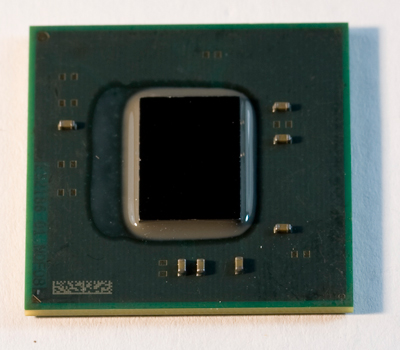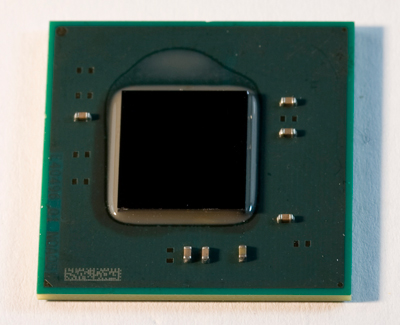The semiconductor industry has long touted a future in which CPUs and GPUs live together on a single die, but whilst AMD's Fusion remains merely a promise, Intel has today become the first manufacturer to integrate a memory controller and graphics core into an x86 CPU with the introduction of its second-generation Intel Atom platform.
Intel's new line of chips, previously codenamed Pineview, arrive in a trio of variants for netbook or desktop use, with each sporting a CPU, a GPU and a memory controller integrated on a single die.
For the mobile market, Intel's Atom N450 - a 45nm single-core 1.66GHz part with 512KB of L2 cache, support for Hyper-Threading and a TDP of 5.5W - is certain to feature at the heart of millions of netbooks in 2010.

Meanwhile, entry-level desktops will be treated to a pair of higher-power variants in the form of the single-core Atom D410 and dual-core D510 (pictured below). Both chips are clocked at 1.66GHz and feature 512KB or 1MB of L2 cache, respectively. Helping differentiate the parts from Intel's netbook-orientated chip, both the D410 and D510 support up to 4GB of DDR2 memory at speeds of up to 800MHz, as opposed to up to 2GB of DDR2 667MHz on the Atom N450.

Although the CPU architecture sounds familiar, what's new here is that Intel has shoehorned both a memory controller and a graphics core into the CPU itself. Intel's graphics solution takes the form of the 45nm GMA 3150, a DirectX 9 GPU clocked at 400MHz.
In terms of performance, it's certainly nothing to give NVIDIA's ION a run for its money, but it should manage 720p video playback without kicking up a fuss. Though, we expect playback of full-HD 1080p content to remain a limitation.
Given the change of architecture, Intel's Pineview CPUs are paired with a smaller, more efficient chipset known as the Intel NM10 Express. With the GPU and memory controller now residing within the CPU, Intel's chipset sports just a single chip that hooks up to the Atom processor via a 2.5GB/s DMI link. Intel claims the end result is a lower TDP, and substantial reductions in cost, overall footprint and power.
What's interesting is that Intel's specification facilitates support for an optional low-cost, third-party HD video decoder to be attached to the chipset via PCIe. We could, then, see OEMs add HD video accelerators from the likes of Broadcom in an effort to offer a little more grunt.
Nonetheless, performance clearly isn't the driving force in Intel's Atom developments. Although performance is likely to undergo a minor improvement, Pineview is all about lowering costs and increasing battery life - both of which could determine the continued success of the netbook form factor.
Expect to see the first wave of Pineview-based systems at next month's CES. In the meantime, Here's Cindy Ng from the Intel netbook marketing team in a video demonstration:













